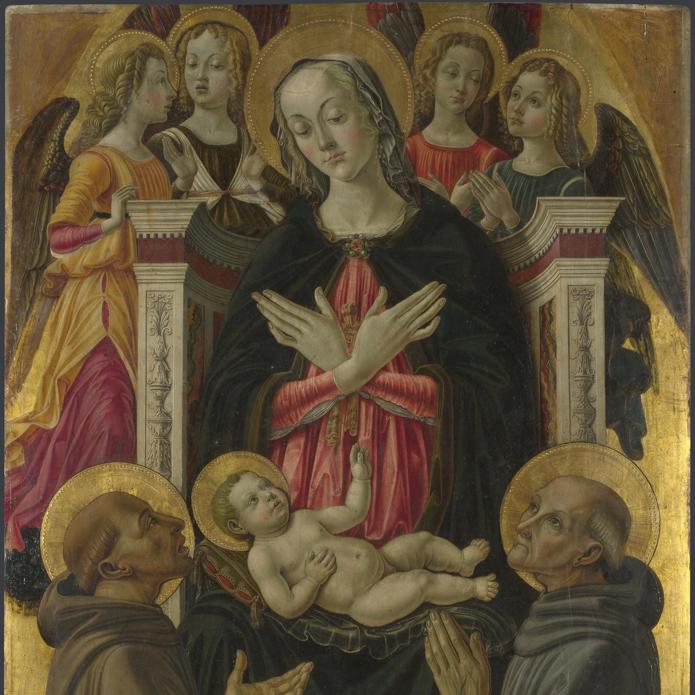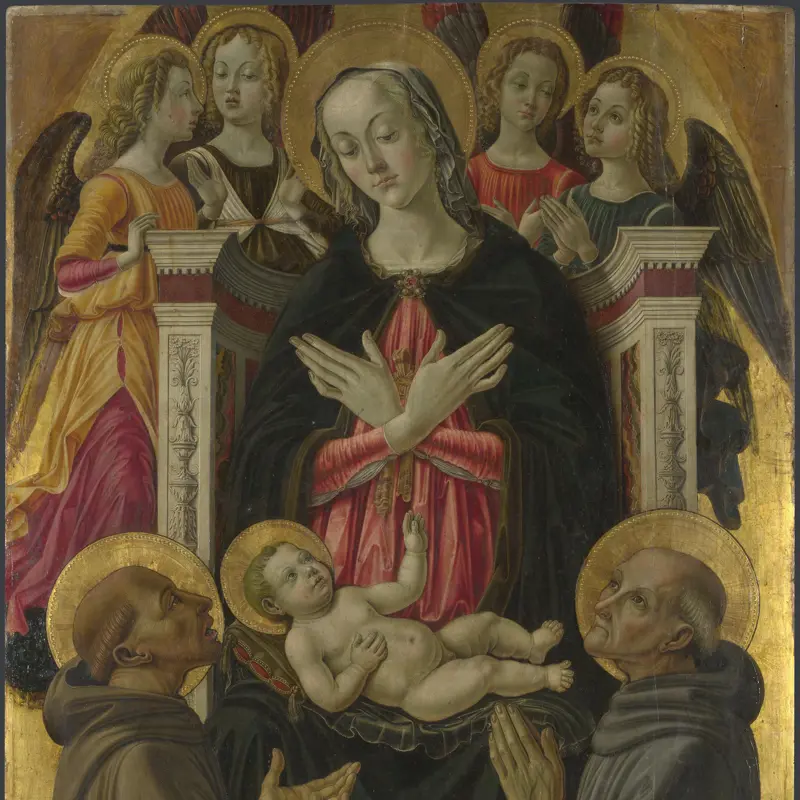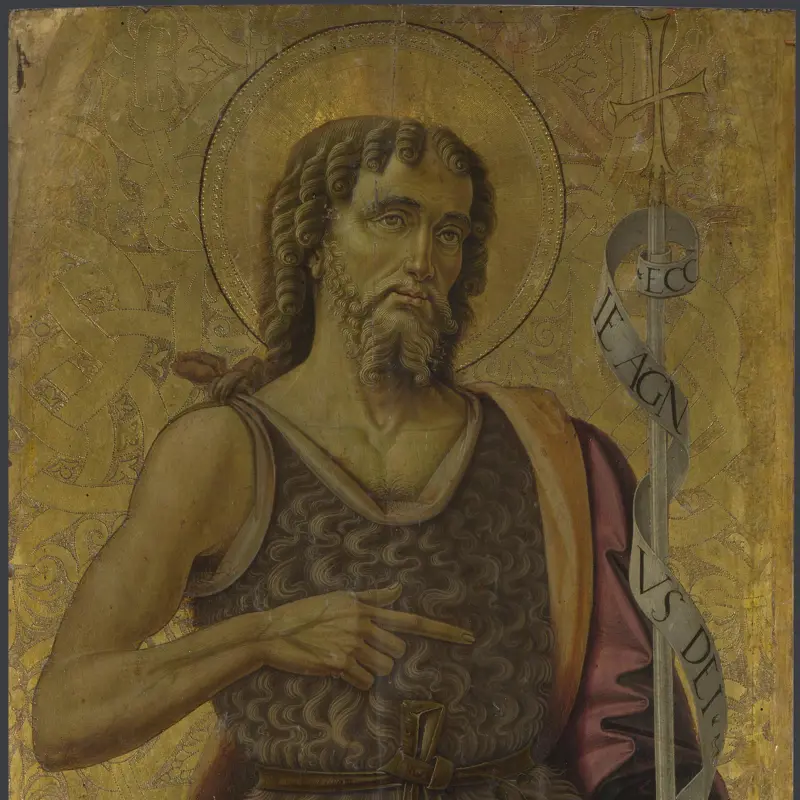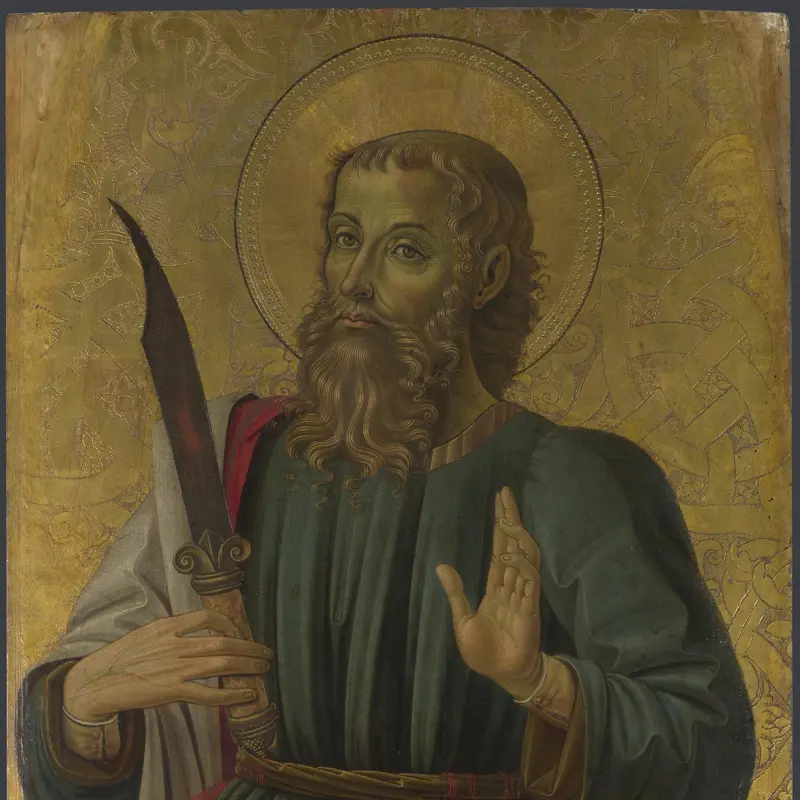Probably by Bartolomeo Caporali, 'Saint John the Baptist', probably 1475-80
About the work
Overview
A barefoot saint, dressed in a camel-hair shirt and holding a cross, stands on a marble base. His hair and beard are arranged in extravagant ringlets, and a long banner curls around the cross; we can see part of a Latin inscription on it.
This striking figure is Saint John the Baptist, the biblical hermit saint. He once stood on the left side of a triptych (a painting in three parts) probably made in around 1475–80 by Bartolomeo Caporali.
The inscription quotes some of the words with which John recognised Christ as the Messiah, ‘Behold the Lamb of God’ or, in Latin, ‘Ecce Agnus Dei’. Caporali perhaps had trouble with his Latin vocabulary: he has written ‘Eccie’ in place of ‘Ecce’.
Key facts
Details
- Full title
- Saint John the Baptist
- Artist
- Probably by Bartolomeo Caporali
- Artist dates
- Active 1467 - 1491
- Part of the series
- Altarpiece: The Virgin and Child with Saints
- Date made
- Probably 1475-80
- Medium and support
- Egg tempera and oil on wood
- Dimensions
- 122.9 × 48.9 cm
- Inscription summary
- Dated
- Acquisition credit
- Bought, 1881
- Inventory number
- NG1103.2
- Location
- Not on display
- Collection
- Main Collection
Provenance
Additional information
Text extracted from the ‘Provenance’ section of the catalogue entry in Martin Davies, ‘National Gallery Catalogues: The Earlier Italian Schools’, London 1986; for further information, see the full catalogue entry.
Bibliography
-
1951Davies, Martin, National Gallery Catalogues: The Earlier Italian Schools, London 1951
-
1986Davies, Martin, National Gallery Catalogues: The Earlier Italian Schools, revised edn, London 1986
-
2001
C. Baker and T. Henry, The National Gallery: Complete Illustrated Catalogue, London 2001
About this record
If you know more about this work or have spotted an error, please contact us. Please note that exhibition histories are listed from 2009 onwards. Bibliographies may not be complete; more comprehensive information is available in the National Gallery Library.
Images
About the series: Altarpiece: The Virgin and Child with Saints

Overview
Two of the most popular late medieval saints – Francis, who died in 1226, and Bernardino of Siena, who died in 1444 – present a young man to the Virgin and Child and a choir of angels; he’s the altarpiece’s patron. In the outer panels stand Saints John the Baptist and Bartholomew.
We don't know where this altarpiece came from, although Caporali seems to have worked mainly in Umbria. Neither do we know who the patron was, though clearly he was a man with a special devotion to the Franciscans, the religious order Francis founded.
This is one of the rare paintings of saints that actually resemble the person they depict. Bernardino was a famous travelling preacher who drew large crowds to his outdoor sermons. Many paintings of him were made immediately after his death – possibly from his death mask, which still survives – and show him as here: an old man with a toothless mouth and sunken cheeks.



